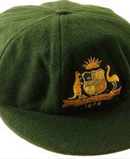

The Ashes Cricket
Australia Cricket Players
Adam Gilchrist | Allan Border | Andrew Symonds | Brett Lee | David Boon | Donald Bradman | Glenn McGrath | Jason Gillespie | Justin Langer | Mark Taylor | Mark Waugh | Mathew Hayden | Ricky Ponting | Shane Warne | Steve WaughThe Ashes series 2006-07
Schedule
The Ashes Cricket History
The Legend of The Ashes
The first Test match between England and Australia had been played in 1877, but the Ashes legend dates back only to their ninth Test match, played in 1882.On the 1882 tour, the Australians played only one Test, at The Oval in London. It was a low-scoring game on a difficult pitch. Australia made only 63 runs in their first innings, and England, led by A N Hornby, took a 38-run lead with a total of 101. In the second innings, Australia made 122, leaving England to score only 85 runs to win. Australian bowler Fred Spofforth refused to give in, declaring, "This thing can be done." He devastated the English batting, taking the final four wickets while conceding only two runs, to leave England a mere seven runs short of victory in one of the closest and most nail-biting finishes in cricket history. When England's last batsman went in the team needed only 10 runs to win, but the final batsman Ted Peate scored only 2 before being bowled by Boyle. The astonished crowd fell silent, not believing that England could possibly have lost by 7 runs. When what had happened had sunk in, the crowd cheered the Australians.
The English media dubbed the English tour to Australia of 1882-83 as the quest to regain The Ashes of English Cricket. The three match series resulted in a 2-1 win to England, notwithstanding a fourth match, won by an Australian XI whose status remains a matter of dispute. The term The Ashes then largely disappears from public use for the next twenty years; certainly, there is no suggestion that this was the accepted name for the series. Then following the successful English tour of 1902-03 the English captain, Pelham Warner published a book called How we Recovered the Ashes. Even though the legend is not referred to in the text, the title was enough to revive public interest. The first mention of The Ashes in the Wisden Cricketers' Almanack occurs in 1905 and the first Wisden account of the Ashes legend was included in the 1922 edition.
The Ashes Urn
As it took many years for the name the Ashes to be given to the ongoing series between England and Australia, there was no concept of there being a representation of the ashes being presented to the winnersNevertheless, several attempts had been made over the years to embody The Ashes in a physical memorial. Examples include one presented to Warner in 1904, another to Australian Captain MA Noble in 1909 and another to Australian Captain WM Woodfall in 1934. The oldest however, and the one to enjoy enduring fame, was the one presented to Hon Ivo Bligh, later Lord Darnley, during the 1882-83 tour. The precise nature of the origin of this urn however, is matter of dispute. Based on a statement by Darnley made in 1894, it was believed that a group of Victorian ladies, including Darnley's later wife Florence Morphy, made the presentation after the victory in the third test in 1883. More recent researchers, in particular Ronald Willis and Joy Munns have studied the tour in detail and concluded that the presentation was made after a private cricket match played over Christmas 1882 when the English team were guests of Sir William Clarke, at his property "Rupertswood", in Sunbury, Victoria . This was before the matches had started. The prime evidence for this theory was provided by a descendant of Lord Clarke. The contents of the Darnley urn are also problematic; they were variously reported to be the remains of a stump, bail or the outer casing of a ball, but in 1998, Lord Darnleys 82-year-old daughter-in-law said they were the remains of her mother-in-laws veil, casting a further layer of doubt on the matter. The urn itself is made of terracotta and is about four inches (10 cm) tall and may originally have been a perfume jar.
In February 1883, just before the disputed fourth test, a velvet bag, which was made by Mrs Ann Fletcher, the daughter of Joseph Hines Clarke and Marion Wright, both of Dublin, was given to Bligh to contain the urn. During Darnleys lifetime, there was little public knowledge of the urn, and no record of a published photograph exists before 1924. However, when Darnley died in 1927, his widow presented the urn to the Marylebone Cricket Club and that was the key event in establishing the urn as the physical embodiment of the legendary ashes. MCC first displayed the urn in the Long Room at Lord's Cricket Ground and since 1953 in the MCC Cricket Museum at the ground. It is ironic that MCCs wish for to it been seen by wide a range of cricket enthusiasts as possible has led to its been mistaken for an official trophy. It is in fact a private memento, and for this reason the Ashes urn itself is never physically awarded to either England or Australia, but is kept permanently in the Museum where it can be seen together with the specially-made red and gold velvet and the scorecard of the 1882 match. The urn has been back to Australia once, in 1988 for a museum tour as part of Australia's Bicentennial celebrations. Despite the fragile state of the urn, it is planned that the urn will tour Australia again in 20067.
In the 1990s, given Australia's long dominance of the Ashes series, and the by now universal acceptance of the Darnley urn as The Ashes, the idea was mooted that the victorious team in an Ashes series should be awarded the urn as a trophy and allowed to retain it until the next series. As it is not a trophy, and its condition was fragile MCC were reluctant to agree. Furthermore, in 2002, Bligh's great-great-grandson (Lord Clifton, the heir-apparent to the Earldom of Darnley) argued that the Ashes urn should not be returned to Australia as it was essentially the property of his family and only given to the MCC for safe-keeping. As a compromise, the MCC commissioned a trophy in the form of a larger-scale replica of the urn in Waterford Crystal to award to the winning team of each series. This did little to diminish the status of the Darnley urn as most important icon in cricket, the symbol of this most ancient and keenly fought of contests.
Australian Cricket History

Australia - World beaters! 
The Australian cricket team is one of the leading international teams in world cricket. Australia was one of the first two Test nations (with England) and have an outstanding recent Test record and in the one dayers were World Champs in 1987, 1999 and 2003. They are also the leaders in the current ICC Test Nations table.
Dates in history of Australian cricketNovember, 1868: 1868 Aboriginal cricket tour of England
15 March 1877: Test debut
28 December 1934: Women's Test team debut
5 January 1971: ODI Debut
23 June 1973: Women's ODI team debut
8 November 1987: Won 4th edition of Cricket World Cup by defeating England in the final match at Eden Gardens, Calcutta.
20 June 1999: Steve Waugh lifts the World Cup
23 March 2003: Ricky Ponting lifts the World Cup



